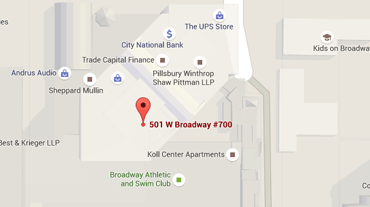California Penal Code 602 prohibits trespassing, which includes entering or remaining on someone else’s property without permission. A trespassing charge can result in a jail term, a permanent criminal record, and compromised employment options. You face charges whether you walked onto private land, ignored posted signs, or failed to leave when asked.
Under California law, you have several defense options to fight trespassing charges. At the Law Offices of Anna R. Yum, we can build solid defenses to fight your trespassing charge in San Diego, CA. Our experienced criminal defense attorneys will help you maneuver the California justice system and fight to have your charges dropped or reduced.
Free Consultation (619) 233-4433
The Meaning of Trespassing Under California Law
Per Penal Code 602, trespassing involves willfully entering or remaining on property without legal right or owner’s consent. Trespassing laws protect property rights and give owners, tenants, and other persons who are authorized the use and enjoyment of their property.
Trespassing can be in various forms, for example:
- Refusing to leave a private residence when asked
- Entering a restricted area with fences or signage
- Entering a private residence without the owner’s permission
Sometimes trespassing happens because of a misunderstanding of where one’s boundaries lie that leads to an alleged trespass. However, the law assumes that you intended the results you produced.
Elements the Prosecutor Must Prove
The prosecutor must prove certain elements beyond a reasonable doubt, to convict you of a PC 602 violation. These elements help determine whether your actions legally qualify as trespassing. They include:
- You willfully entered or remained on the property of another person. It means you did it on purpose, not by accident. This requirement might not be met, for example, if you prove you walked onto someone’s property because you thought it was public land when it is not.
- You entered the property without the owner’s consent or legal right to be there. This criterion is met even if the property was unfenced or unmarked and you entered without permission. Legal consent could be an invitation from the property owner. However, when revoked, verbally or in writing, and you remain on the property, you could face trespassing charges.
- You interfered with the property owner’s rights by your actions. Physical interference means blocking access or disrupting the owner’s peaceful use of the property. The law does not require proof of malicious intent, but whether your presence amounted to an unwelcome intrusion.
Common Legal Defenses
If you are charged with PC 602, there are several legal defenses your criminal lawyer could employ to fight the prosecutor’s case. These include:
Right or Consent to be on Property
The strongest defense to trespassing is proving that you were within the owner’s permission or right to be on that property. Express or implied consent can be used as a defense. For example, your landlord invites you to talk about problems with your lease, and then later accuses you of trespassing. In court, you could argue that the landlord gave their consent to your being there when they invited you.
This defense also applies to cases in which property access is contingent upon public accommodations or common areas. Consider a shopping mall open to the public. If no one explicitly revoked your right to be there, your presence is not unlawful.
Also, misunderstandings between the property owner and the accused could occur. Perhaps you thought you could enter the property because of past dealings, or agreements. Here, the legal focus is whether you reasonably thought you had a right to be on the property even if the owner later said you did not.
In such situations, emails, text messages, or testimony from witnesses can be vital evidence. These documents or statements help to show that when you entered you did not do so with an intent to trespass, but rather on the notion that you were allowed there.
No Willful Act
Willfulness is a key element of trespass. You must have knowingly and intentionally entered or remained on someone else’s property without permission. PC 602 does not apply to you if your conduct was accidental or a result of a misunderstanding.
Imagine that you were hiking, and you wandered onto private property without realizing it because the boundary lines were not marked. If there is no intent to trespass, the charge cannot hold. This is because you did not have malicious intent, and you had no reason to believe you were committing any property rights violations.
The same principle if someone misdirected you onto private land. For example, a delivery driver took GPS instructions into a gated community and entered without authorization. Here the driver did not mean to trespass on private property, so the charges could be dropped.
No Fence or Signs
Property owners should do what is reasonable to let others know that unauthorized entry is not allowed. Clear, visible signs saying “No Trespassing,” or a similar statement, are usually necessary to prove unlawful entry. Also, when fencing is present, it acts as a clear deterrent, and notice that entry is prohibited.
However, if there are no such measures, the prosecution may lose an argument that you knowingly violated the law. Therefore, if you walk unawares into an area where you cannot see any visible warnings, you could claim that you did not know that you were not allowed to be there.
For example, you are strolling through a wooded area, and without breaking a stride, stepping into a private property next to it. If there are no fences, gates, or signs saying where public land ends and private land begins, you might not even know you’re trespassing. In these situations, the law doesn’t expect you to be a mind reader, or to bring a surveyor’s map to figure out boundaries.
Photographic evidence, GPS data or witness accounts may be used by your defense attorney to show there were no barriers or warning signs. They may have argued that there was a reasonable belief that the land was open and unmarked and so accessible. The principle behind this defense is that you cannot be punished by the law for breaking boundaries that were not communicated.
Possible Penalties and Punishment for Trespassing
Below are the penalties you could be subject to if the court finds you guilty:
Misdemeanor Trespass
Trespassing is often charged as a misdemeanor, with penalties that can affect your life in many ways. If convicted, you could be sentenced to up to six months in county jail and fined up to $1,000, or both.
Probation could be assigned, with accompanying court-mandated conditions, such as community service, restitution to the property owner, or even a stay-away order from the property. These conditions still constrain you and your daily life and freedoms.
Also, misdemeanor trespass charges can carry a social stigma. A criminal record can jeopardize job applications, housing agreements, or college applications. Misdemeanor convictions can be viewed unfavorably by employers and landlords, no matter the circumstances.
Trespass as an Infraction
A Penal Code 602 violation may be treated as an infraction in some cases. Infractions are the least severe type of offenses under California law, but should not be taken lightly. Convictions, even for infractions, can cause trouble, but the problems are not as severe as those from misdemeanors.
If you are charged with trespass as an infraction, the penalties are normally a fine rather than incarceration. For a first offense, these fines average from $75 to $250, with higher possible fines for subsequent offenses.
These penalties may not seem like much when compared to the harsh penalties of a misdemeanor, However, if you accumulate multiple infractions, or if the alleged trespass was particularly egregious, such as repeat offenses or ones that disturbed public order, the penalties become more serious.
Furthermore, infractions can appear in background checks. This visibility could lead to employers or landlords who are not familiar with infractions vs. misdemeanors thinking that you are a serious criminal.
Aggravated Trespassing
California Penal Code 601 punishes aggravated trespassing, which is an increase in the seriousness of a typical trespassing offense. In addition to unlawful entry, this statute addresses threats of violence or actions that create a reasonable fear of the safety of someone.
Penal Code 601 adds elements of intimidation to Penal Code 602, making it a more serious crime. If you are charged with aggravated trespassing, the prosecutor must prove that you did it deliberately and that the trespass was related to a credible threat made before or during the trespass.
Credible Threat
The major element of an aggravated trespassing charge is a credible threat. According to Penal Code 601, a threat is credible if it shows a serious intent to cause harm. The law doesn’t require that the defendant carry out the threat for it to be considered credible. Instead, the question is whether the person who received the threat had a reasonable belief the threat would be carried out.
For example, you disagree with someone and send them a message saying you are going to hurt them. After you have entered their property unlawfully and subsequently said the same thing to them, it may be considered a credible threat. This is because it caused the person to be genuinely concerned about their safety.
The judge could consider what you said, the context of the threat, such as the tone, and medium you used to communicate the threat, and whether you have made similar threats in the past. Courts also consider how the recipient perceived the threat when determining whether it was credible. It’s a standard of reasonableness — did the recipient have a legitimate reason to believe the threat was real? The prosecution could win your aggravated trespassing conviction if they can prove this.
Serious Bodily Injury
Serious bodily injury is substantial physical harm that significantly impairs the health or physical condition of a person. That includes injuries from broken bones, severe cuts, or organ damage that require extensive medical treatment. Aggravated trespassing under Penal Code 601 is an offense where a credible threat of causing such injuries to the victim or immediate family of the victim is an essential element of the charge.
Reasonable Fear
A reasonable fear involves a perception on the victim’s part of a real and immediate threat to their safety. The law looks at whether a typical person in the victim’s position would feel threatened in a given set of circumstances. This plays a key role in proving aggravated trespassing because the defendant’s actions must have caused the victim to have sustained fear for his safety or the safety of his family.
Immediate Family Member
Close relatives include a spouse, parent, child, sibling, or any other person with whom the victim has lived in the same house. Threats or actions against these individuals are considered aggravated trespassing under Penal Code 601 because they directly cause the victim to be reasonably fearful, and it increases the severity of the crime.
Punishment for Aggravated Trespassing
Aggravated trespassing is a wobbler offense under Penal Code 601. That means it can be charged as a misdemeanor or a felony, based on the circumstances of a particular case.
Penalties for charges as a misdemeanor include:
- Up to one year in county jail
- Summary probation
- A fine of up to $2,000
If charged as a felony, the punishment includes:
- Formal probation
- Up to three years in county jail
- A maximum fine of $10,000
Defenses to Aggravated Trespassing
The legal defenses you could use to fight your aggravated trespassing charges are:
No Intent To Cause Fear
The absence of intent to instill fear is a viable defense to aggravated trespassing. For the court to convict you, the prosecutor must prove that you willfully did so to cause someone to feel threatened. This defense could be used if your actions were misunderstood or if you did not intend to create fear.
There Was No Intent To Carry Out The Threat
Even if a statement or gesture seems threatening, you cannot be found guilty of aggravated trespassing unless there is proof that you intended to act on it. This defense argues that the prosecutor cannot prove beyond a reasonable doubt that you wanted to harm the victim.
No Credible Threat Intentions
Aggravated trespassing is a crime that requires the threat to be credible, or in other words, that it could be reasonably carried out. You can argue that your words or actions were not credible, because they were exaggerated, sarcastic, or unrealistic. Therefore, you did not meet the legal standard of a credible threat. This directly challenges a key element of the charge.
Immigration Consequences
Aggravated trespassing could have severe immigration consequences. Aggravated trespassing is a crime involving moral turpitude (CIMT) if the underlying conduct shows an intent to threaten or harm another person. Non-citizens will be deported or declared inadmissible if the crime is one involving moral turpitude or an aggravated felony, depending on the facts.
The Effect On Your Gun Rights
If you become convicted of aggravated trespassing as a felony in California, you can lose your firearm rights. In other words, you cannot buy, own, or possess firearms for as long as this prohibition exists. But a misdemeanor conviction doesn’t restrict the same way.
Expunging Your Conviction
If you complete probation and meet other legal requirements, you may be able to expunge a conviction for violating Penal Code 602. Also, expunging a PC 601 conviction will not restore your gun rights. However, it can help you move forward by clearing the conviction from your criminal record.
Related Offenses to Trespassing, Penal Code 602
Burglary, California PC 459
A California PC 459 violation is a more serious crime than trespassing because it involves unlawful entry with the intent to commit theft or a felony. Burglary is a crime of intent and this distinction in intent raises burglary from a property crime to a crime that carries with it serious consequences.
Burglary is categorized into two degrees:
- Residential/First-Degree Burglary–This is charged as a felony and always carries a sentence of up to six years in state prison.
- Commercial/Second Degree Burglary–This is a “wobbler,” so it can attract a misdemeanor or a felony charge, and it involves commercial properties. Misdemeanor convictions carry county jail terms of up to one year. Again, felony charges can result in a prison sentence of up to three years.
The prosecution must prove the following before the court can convict you:
- You entered a structure, vehicle, or property
- At the time of entry, you intended to commit a felony such as theft
The only difference between burglary and trespassing is intent. Even if the theft or another felony was not committed, if the intent was there at the time of entry that is all you need to be convicted of burglary.
Therefore, trespassing charges may be issued in the beginning if you break into a locked garage. However, if there is evidence of intent to steal tools inside, it becomes a burglary.
You can defend your charges using strategies like:
- You had no intent to commit theft or another felony
- Yours is a case of mistaken identity
- The prosecution lacks enough evidence
- Improper police procedures
Vandalism, California PC 594
California Penal Code 594 defines vandalism as the intentional destruction, damage, or defacement of another person’s property. Vandalism differs from trespassing in that it involves actions that visibly damage property, not just unauthorized entry.
For the court to convict you of vandalism, the prosecution must prove:
- You maliciously damaged, destroyed, and defaced someone else’s property.
- Your actions were against the property owner’s wish.
- You did not act accidentally but willfully.
Vandalism is a misdemeanor if damages are less than $400. Upon conviction, you could face punishment of up to one year in county jail and fines of up to $1,000. Vandalism becomes a “wobbler” for damages greater than $400. If convicted of felony vandalism, possible punishment could include up to three years in county jail and substantial restitution costs.
A trespass and a vandalism charge can be combined, for example, for trespassing into a private garden and spray painting a wall. You could be charged with a felony if the cost of removing the graffiti is more than $400.
Conviction can affect employment opportunities, housing, and your reputation. Vandalism on school property will have additional penalties.
Your defense attorney could use the following defenses to fight for your rights:
- Accidental damage, or lack of malicious intent.
- Mistaken identity.
- Insufficient evidence.
Arson, California 451
Under California PC 451, arson is the willful and malicious burning of property, land, or structures. Because of its potential to cause catastrophic harm, this offense is one of the most serious trespassing offenses. The prosecution cannot secure your conviction before they can prove the following:
- You willfully and maliciously set fire to, burned, or caused to be burned a structure, forest land, or personal property.
- You acted intending the harmful consequences.
Arson is always charged as a felony, with penalties depending on the severity of the damage. The penalty for arson involving inhabited structures or endangering human life is up to nine years in state prison. In addition, sentencing enhancements can add extra years to the prison term if great bodily injury occurs.
Many people are confused by the difference between reckless burning and arson. Under PC 451, arson involves setting fires maliciously and intentionally. On the other hand, PC 452 explains reckless burning as fires caused by reckless behavior; hence, carrying lighter penalties.
Note that trespassing and arson charges may both arise out of unlawfully entering private property and setting fire to a structure. Arson attracts lifelong repercussions like a criminal record. Since arson is CIMT, you could lose your immigration status if you are a non-US resident. The court could also order you to compensate for the damages and firefighting costs.
Suitable legal defense when facing arson charges are:
- Lack of intent. If you prove this, the charge can be reduced to reckless burning under PC 452.
- Insufficient evidence. This defense challenges the origin or cause of the fire.
- Yours is a case of mistaken identity.
Find a Theft Crimes Defense Lawyer Near Me
Under PC 602, trespassing involves intentional actions that violate someone’s property rights including unlawful entry. Actions include entering or staying on someone else’s property after your permission has been revoked. The consequences for trespassing can be misdemeanor penalties like fines and possible jail terms. Punishment could be elevated if facing aggravated charges.
Relief may be available through defenses such as lack of intent or permission to be on the property, but no two cases are alike. You will need a skilled legal professional on your side, to protect your rights and to fight for the best possible outcome.
At the Law Offices of Anna R. Yum, we defend suspects against trespassing and related charges in San Diego, CA. If you are facing trespassing accusations, consult with our experienced attorneys to help with solid defenses. If you wish to schedule a consultation, call our office at 619-493-3461.











